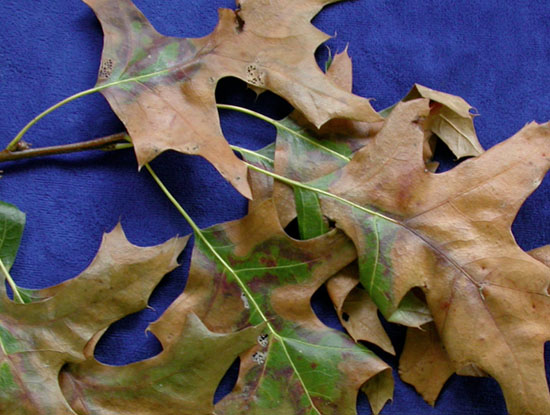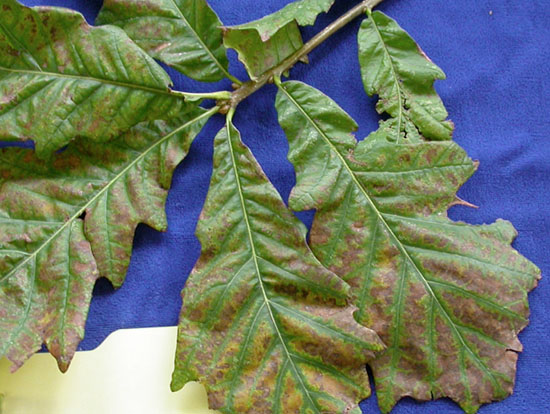Issue 13, August 8, 2011
Testing for Bacterial Leaf Scorch of Trees will be offered at the U of I Plant Clinic
Scorch may be of the noninfectious or infectious type. Environmental stress, root injury, drought, and many other factors may cause leaf margin necrosis, a condition we call scorch. It is usually widespread in a tree and is fairly uniform. Such a condition is not necessarily repeated in following years and is noninfectious. Unfortunately, we are seeing a lot of scorch symptoms on leaves brought on by this season's environmental stress.
Bacterial leaf scorch (BLS) is an infectious disease that spreads systemically and causes a slow decline and death of the tree. This disease is not new but is beginning to appear more frequently in the Midwest. Possibly this is a function of more people recognizing the symptoms.
The infectious leaf scorch is caused by the bacterium Xylella fastidiosa. The bacterial pathogen is found only in xylem tissue. Xylem-feeding leafhoppers and spittlebugs are thought to spread the bacterium in landscape trees. It can also be transmitted between trees through root grafts. The transmission methods must not be very effective, though, because we do not see rapid spread of the disease from tree to tree.
The most frequent hosts of this disease include elm, oak, sycamore, mulberry, sweetgum, sugar maple, and red maple. Look for scorch symptoms that occur in early summer to midsummer and then intensify in late summer. The scorched leaf edges or tissue between veins may be bordered by a yellow or reddish-brown color. The symptoms occur first on one branch or section of branches and slowly spread in the tree from year to year. It is one of those situations that you hope will be better next year but only gets worse. Symptoms will often show on oldest leaves first, distinguishing this disease from environmental scorch that first appears on newest leaves.

Bacterial leaf scorch (photo by Nancy Pataky)
Of course, diagnosis is never that simple, and oaks are an exception. We did not observe this pattern on pin oaks in Illinois. In fact, most references say that oaks show symptoms on an entire branch at once. Bacterial scorch often allows infected leaves to remain on the tree until the fall. Oaks are again the exception. They will drop leaves early. If you have seen a slow decline in your oak, leaf scorch symptoms showing each July to August, and fall leaf drop about a month ahead of healthy oaks, BLS may be present.

Bacterial leaf scorch (photo by Nancy Pataky)
We will be testing for this bacterium at the U of I Plant Clinic. There is a fee. As of this writing, the fee will be $25 per sample. It is suggested that you call ahead to be certain you have prepared the correct sample and avoid resampling at your expense. Leaf petiole tissue is preferred for this test, so leaves with green petioles are the usual request. Please send your samples in the next several weeks. We will collect samples, store them, and then run ONE test on all the submitted samples at the end of August, 2011.
What can you do if bacterial scorch is present? First, there is probably nothing you can do to keep the tree from dying. You can help by pruning out dead wood as it appears. Start thinking of tree replacement and plant something that is not known to host this disease. Be sure to pick a species that does well in the site you have in mind. Investigate drainage pattern, soil type, amount of sunlight, and any oddities about the location. There are not any fungicides, insecticides, or bactericides that can be sprayed on a tree to effectively prevent or cure this disease. There may be antibiotics that can be injected may need to be repeated as frequently as every year, can be costly, and afford no guarantees. (Stephanie Porter)
Author:
Stephanie Porter